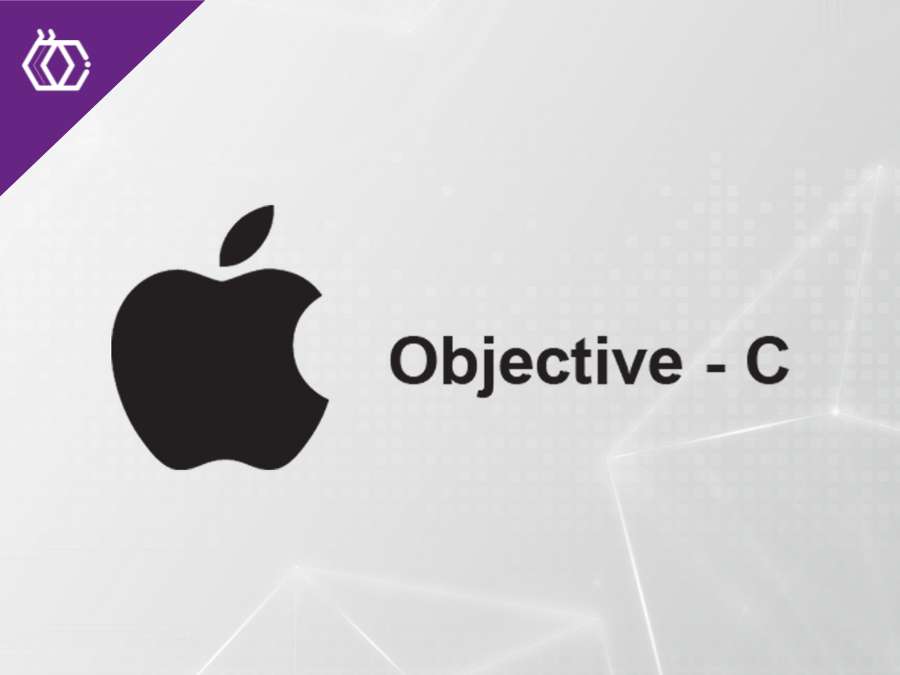

Objective-C
(10 minutes of reading) Objective-C is a general-purpose object-oriented programming language that was developed by Brad Cox and Tom Love in the early 80s. It is a superset of the C programming language and adds object-oriented features and dynamic runtime features. Objective-C was originally developed for the NeXTSTEP operating system, which was later acquired by Apple and became the basis for macOS, iOS, and other Apple operating systems. As a result, Objective-C has been the main programming language for developing applications for Apple platforms. Objective-C is known for its use of Smalltalk-style syntax for passing messages between objects. This contrasts with the dot notation used in many other object-oriented languages such as Java or C#. Objective-C also supports several dynamic features, such as runtime binding, dynamic method invocation, and introspection, which allow for greater flexibility and expressiveness. In recent years, Objective-C has largely been replaced by Apple's newer programming language, Swift, which was designed to be a more modern, secure, and accessible language for the development of the Apple platform. However, Objective-C still has a significant following, and many legacy applications are still written in Objective-C. Come read our article today to learn more about Objective-C SYNTAX Objective-C syntax is based on the syntax of the C programming language, with additional syntax to support object-oriented programming features. Here are some key aspects of the Objective-C syntax: 1- Message syntax: Objective-C uses a unique syntax for calling methods on objects. Instead of using traditional dot notation as in some other object-oriented languages, Objective-C uses a message syntax, where methods are invoked by sending a message to an object. The message syntax uses square brackets, like this: [ object message] 2- Classes: In Objective-C, classes are defined using the @interface and @implementation keywords. The @interface keyword is used to declare a class's interface, which includes the class name, instance variables, and method signatures. The @implementation keyword is used to define the implementation of the class, including the actual code of the methods. 3- Objects and Pointers: In Objective-C, objects are created using the alloc method, which allocates memory for the object, and the init method, which initializes the object. Objects are normally manipulated through pointers, which are declared using an asterisk (*) before the variable name. 4- Properties: Objective-C supports the use of properties, which are a convenient way to encapsulate instance variables and provide getter and setter methods for accessing and modifying their values. Properties are declared using the @property keyword in the @interface section of a class. 5- Protocols: Objective-C supports the concept of protocols, which define a set of methods that a class can implement to provide a certain behavior or interface. Protocols are declared using the @protocol keyword. Overall, the Objective-C syntax may be a little different compared to other programming languages due to the use of message syntax and other unique features. However, once you become familiar with its syntax and conventions, it can be a very powerful and expressive language for building complex object-oriented applications. WHAT SHOULD I KNOW ABOUT OBJECTIVE-C? Here are some important things to know about Objective-C: 1- Memory Management: Objective-C uses manual memory management, which means that developers must explicitly allocate and free-up memory for objects. This is done using the alloc, init, retain, release, and autorelease methods, which can be quite complex and error prone. More recently, Objective-C has added support for automatic reference counting (ARC), which can help simplify memory management and reduce the risk of memory leaks and crashes. 2- Foundation Framework: Objective-C includes the Foundation framework, which provides a rich set of classes and APIs for common programming tasks like working with strings, arrays, dictionaries, dates and files. The Foundation framework also includes support for networking, multithreading, and internationalization. 3- Cocoa Framework: In addition to the Foundation framework, Objective-C also includes the Cocoa framework, which provides a set of classes and APIs for building user interfaces and interacting with the operating system on Apple platforms. Cocoa includes classes for working with views, windows, controls, and other user interface elements, as well as support for event handling, graphics, and animation. 4- Cross-platform development: Although Objective-C is primarily associated with Apple platforms, it is possible to use Objective-C to develop cross-platform applications using tools such as GNUstep or Cocotron. These tools provide a set of Objective-C frameworks and APIs designed to work on a variety of operating systems, including macOS, Windows, and Linux. 5- Swift Interoperability: Since the introduction of Swift as Apple's new flagship programming language for its platforms, Objective-C and Swift have been designed to work seamlessly together. This means that developers can use both languages in the same project and can easily call Objective-C code from Swift and vice versa. Overall, although Objective-C is not as widely used as it once was, it is still an important language for Apple platform development and has a rich history and ecosystem of tools and frameworks that can be useful for developers who need to work with legacy code. or who want to create cross-platform applications. MAIN FEATURES Here are some of the main features of Objective-C: 1- Object-Oriented: Objective-C is a fully object-oriented language, which means that all code is organized into objects that can interact with each other through message passing. This makes it suitable for building complex modular applications. 2- Dynamic runtime: Objective-C has a dynamic runtime, which means that many aspects of the language, such as method invocation and class loading, are determined at runtime and not at compile time. This allows for greater flexibility and expressiveness, but it can also make the language more complex and difficult to debug. 3- Smalltalk-inspired syntax: As mentioned earlier, Objective-C uses a unique syntax for message passing that is inspired by the Smalltalk programming language. This syntax uses square brackets to send messages to objects, which can be a little unusual compared to other languages, but it can also be very expressive. 4- Manual memory management: By default, Objective-C uses manual memory management, which means that developers must explicitly allocate and free-up memory for objects. While this can be more complex than the automatic memory management used in other languages, it also gives developers finer control over memory usage. 5- Foundation and Cocoa Frameworks: Objective-C includes two powerful frameworks for building applications: the Foundation framework and the Cocoa framework. These frameworks provide a rich set of classes and APIs for common programming tasks such as working with strings, arrays, dictionaries, dates, files, user interfaces, graphics, and more. 6- Cross-platform support: Although Objective-C is primarily associated with Apple platforms, it is also possible to use Objective-C to develop cross-platform applications using tools like GNUstep or Cocotron. 7 - Classes are objects: Each class is an instance of a metaclass created and managed automatically by the runtime. You can define class methods, pass classes as arguments, place them in collections, and so on. To create an object, you need to send a message to the class you want to instantiate. No need to recreate a factory system. This helps keep the language simple and strong. 8- Dynamic Typing: Just like in Ruby, Python, Smalltalk, Groovy. It's very useful because we don't always know in advance what our objects will be at runtime. Dynamic typing in Objective-C is easy to use. 9- Optional static typing: Objective-C also supports static typing. The best of both worlds. This declares a variable that can hold a reference to an object of the NSView class or subclass: 10- Categories: Categories allow you to define new methods and add them to classes for which we don't have the source code (like the standard Cocoa classes provided by Apple). This makes it easy to extend classes without resorting to subclassing. Extremely useful for adapting existing classes to the requirements of the frameworks we want to use or create. 11- Sending a message: The interaction with the objects is through messages. Generally, the receiver of a message will have a method that corresponds directly to the message, that is, that has the same name or, in Objective-C terms, the same selector. In that case, the method will be invoked. But this isn't the only possible outcome, as an object can choose to handle a message in other ways, such as forwarding it to another object, broadcasting it to a series of objects, introspection, and applying custom logic. 12- Expressive Message Syntax: Message patterns in Objective-C are like natural language sentences with gaps, prefixed with a colon. This form comes from Smalltalk and makes the code very expressive. 13 - Automatic Garbage Collection: The automatic garbage collector runs on its own thread, concurrently with the application code. It uses a generational model to improve its efficiency by targeting priority memory zones that are more likely to be garbage. The garbage collector is an optional service: you can choose not to use it or not in your application. This system includes a rather ingenious delayed release mechanism that goes a long way in reducing the burden of manual reference counting. Overall, Objective-C is a powerful and expressive language that has been widely used for Apple platform development for many years. While it may not be as popular as it once was, it still has a devoted following and continues to be an important language for many developers. What did you think of our article? Be sure to follow us on social media and follow our blog to stay up to date!
Share this article on your social networks:
Rate this article:
[yasr_visitor_votes size=”medium”]



